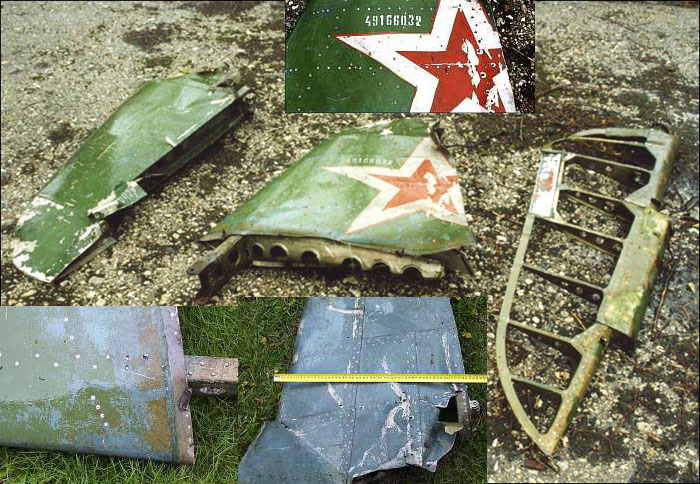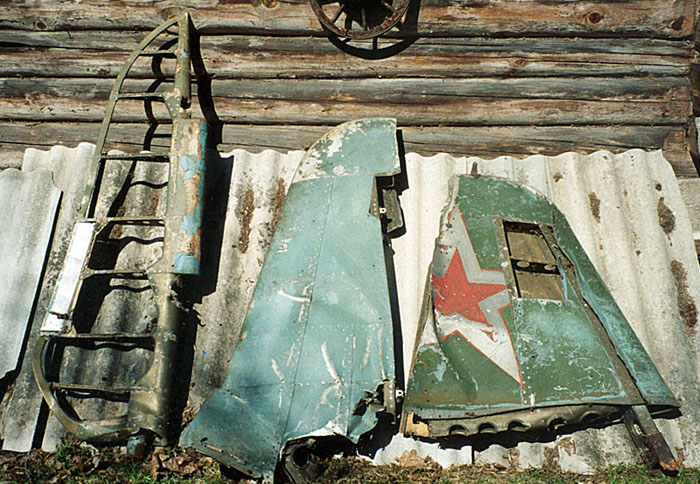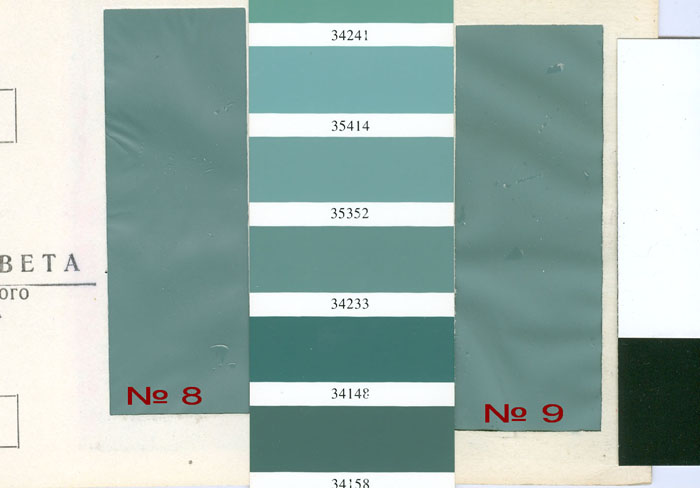Yak-3VK-107
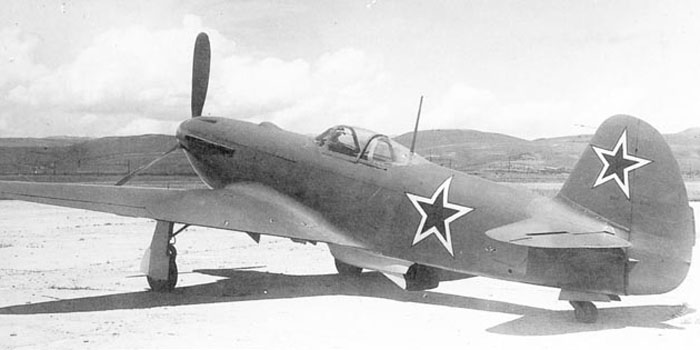
The first production Yak-3VK-107 of Zavod No.292 in Saratov in the spring of 1946. About 50 of these planes were built, but it's unclear if they saw service because they were full of defects.
These planes had metallic wings, but wooden rear fuselage and fabric skinned control surfaces.
This plane looks painted with grey AMT-11 uppersurfaces and light blue AMT-7 undersurfaces.
Image from Red Stars of Geust-Keskinen-Stenman
Yak-9P
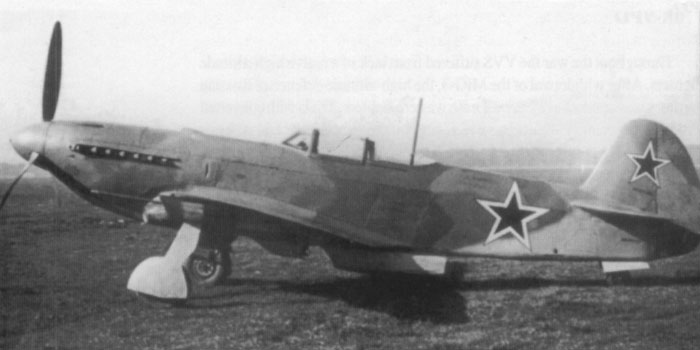
Early Yak-9P , introduced in late 1946, were still camouflaged with the wartime grey/grey livery (AMT-7/11/12). Some of them had still a wooden rear fuselage as wartime Yak-9U but with rounded all-metal wings.
The production was soon standardized on all-metal construction, apart for the fabric skinning of control surfaces.
Image from Mushrooms- Yak-9 U and P of Robert Panek
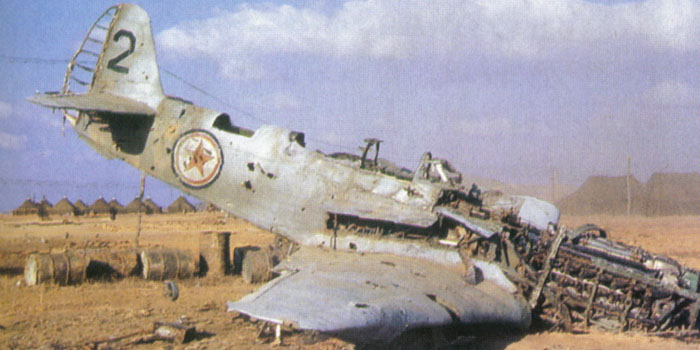
In mid of 1947, the standard livery for Yak-9P became light blue-grey AGT-16 overall.
Here we see a Yak-9P destroyed in Korea in 1950. Its livery was probably overall AGT-16, faded, opacized, covered with dust; the darker parts on the tail could be due to a previous grey-grey camouflage unperfectly covered by the new paint.
Yak-11
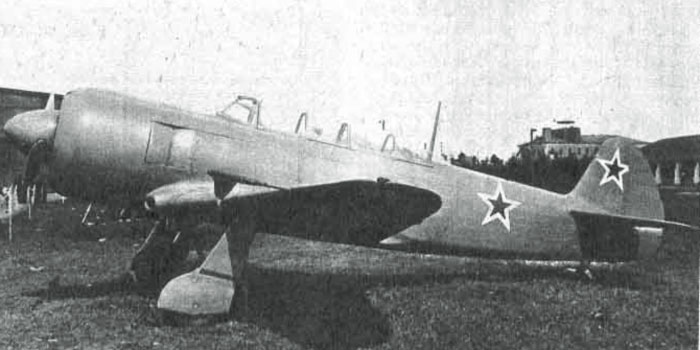
The Yak-11 trained, developed after the war and structurally very similar to the wartime Yak fighters, was a mixed construction plane with the rear fuselage and control surfaces skinned with fabric; early planes had plywood side panels, soon replaced by metal ones.
It was often finished in uniform AGT-16 light blue-green livery and stars in .
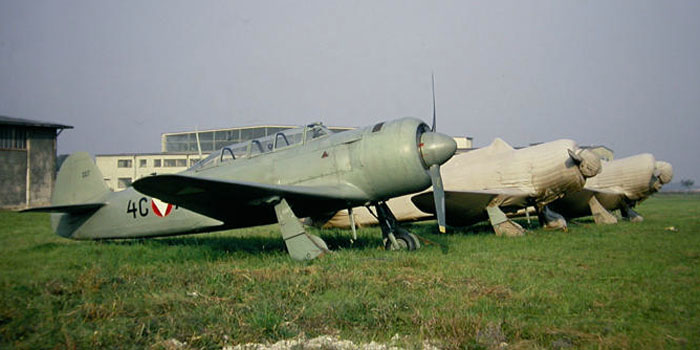
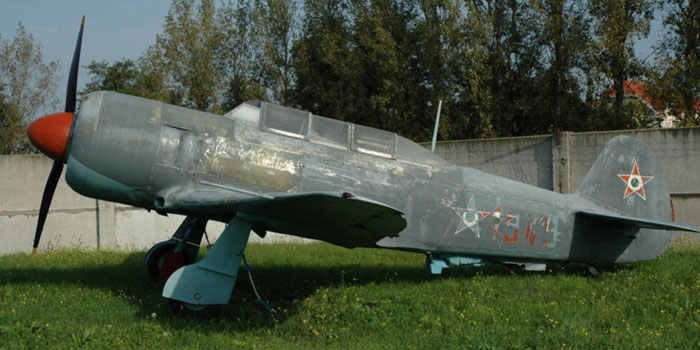
Right: color photo of Austrian AF Yak-11s apparently with the original color.
Below left: photo of an Hungarian plane in museum. Thw worn grey uppersurface leaves visible an underlying green uppersurface.
Below:
probably the same plane mounted on a pylon. It was repainted with green uppersurfaces and light blue under the wings and tail, but the fabric on therear fuselage remained broken and shows a blue-grey finish.
From www. plasticwings. h
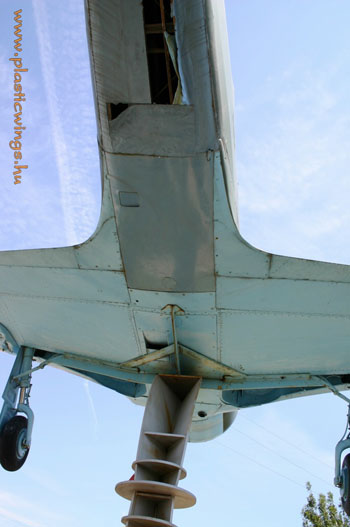
Yak-15
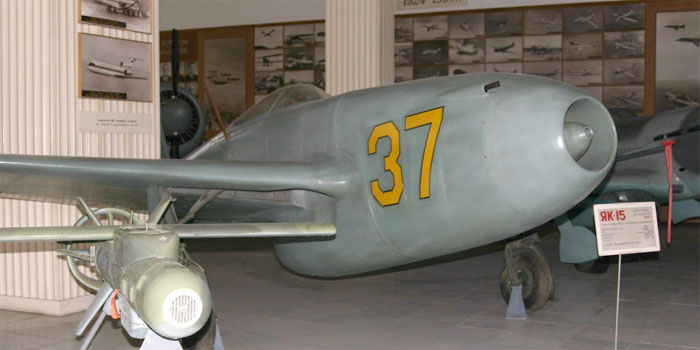
The Yak-15 was built in 1947 at Zavod 31 in 260 examples and used mainly as an advanced trainer.
Its structure was derived from Yak-3, and it preserved a tail wheel as a prop-driven fighter.
The Yak-15 photographed by Dmitry Sribniy at the Yakovlev Bureau Museum .
http://walkarounds.airforce.ru/avia/rus/yak/yak-15/index.htm
It still wears a convincing A-36g uniform livery. .http://www.youtube.com/watch?v=IfV4ePGtS1Y
In movies, Yak-15 appears darker (AMT-11?) and with red stars in 6 positions (not over the wings)
Yak-17

The Yak-17 was built in 430 examples in 1948; the most of them were two-seat trainers.
The factory livery of single-seaters Yak-17 was light blue-grey A-36g, with red stars in 6 positions (not over the wings)
Yak-23
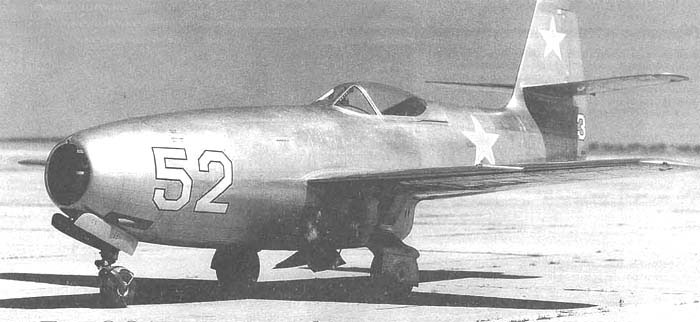
The Yak-23 entered service in the VVS in late 1949; it remained in production until 1950, 310 being produced.
Although it had good flight qualities, it was outclassed by the MiG-15. Soviets exported many of them to their allies.
Yak-23s had the '170' aluminium livery.
La-9
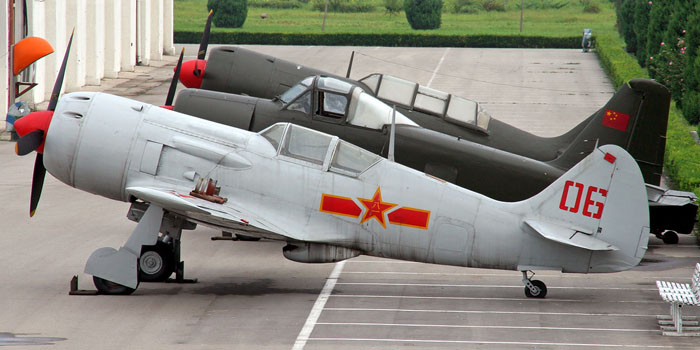
The wooden ancestors of La-9, '120' and '120r' of January 1945 bore a livery with upper and side surfaces in medium color, probably blue-grey AMT-11 and light blue AMT-7 undersurfaces, with 6 red stars according to wartime standards.
The prototypes of La-9, 130 and 130D, bore a glossy uniform finish, slightly lighter than the red of the stars, that could be polisged AMT-11 grey. Not all the prototypes had the red stars on the tail, but they started to reappar on the wings uppersurfaces.
The first production planes came out from Zavod 21 in 1946 with an AMT-11/AMT-7 livery; the absence of the stars on the tail of many of them was noteworty; in the meanwhile, the stars reappeared over the wings.
Image of chinese air force La-9 with light grey livery.
Photo Yu Min at http://www.airliners.net/photo/China---Air/Lavochkin-La-9/1361882/L/
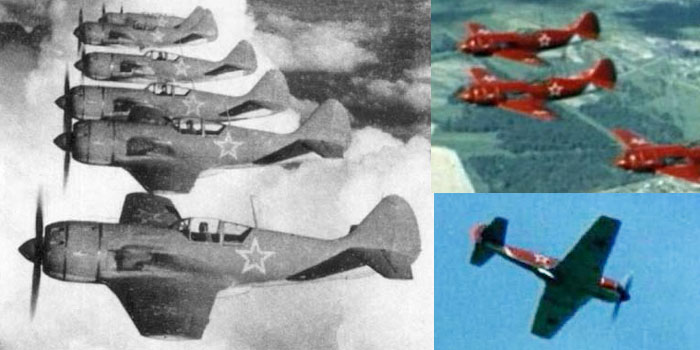
La-9 was put into production at Zavod 21 in 1946.
Some interesting photos: looking at the bw version, one can ask if Lavockins of 1946-48 were painted with uniform grey or green uppersurfaces...
for one time, a color image give the answer: they were RED. In this case only.
(from TV series Wings of Russia on Youtube)
The position of national insignas was as before the war: wings upper and undersurfaces and fuselage sides, not on the tail.
La-9-11 are described 'green and light blue as prewar I-16' by a veteran theat flew them in Korea.
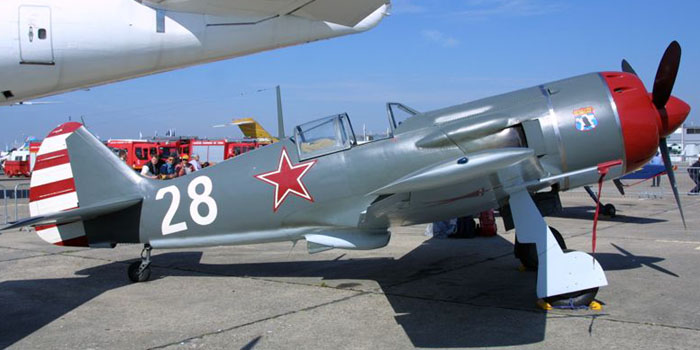
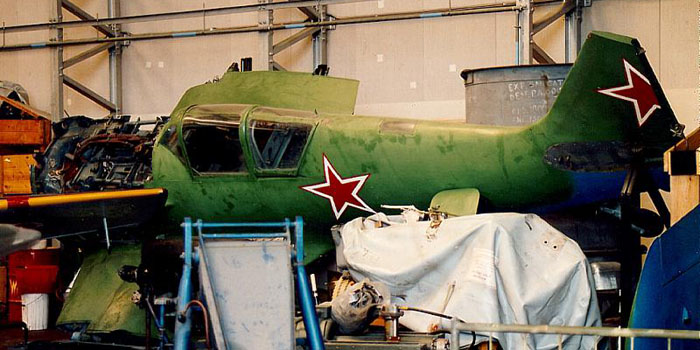
The restorers of this La-9 opted for the grey livery.
Before restoration, the plane had still the green/blue livery (obviously not the original paints, particularly the blue).
I've doubts about the accuracy of the Soviet stars coupled with a Chinese-style white-red rudder.
(image of Paul Nann)
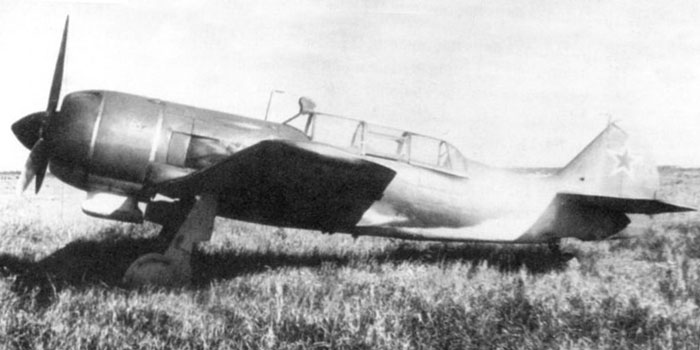
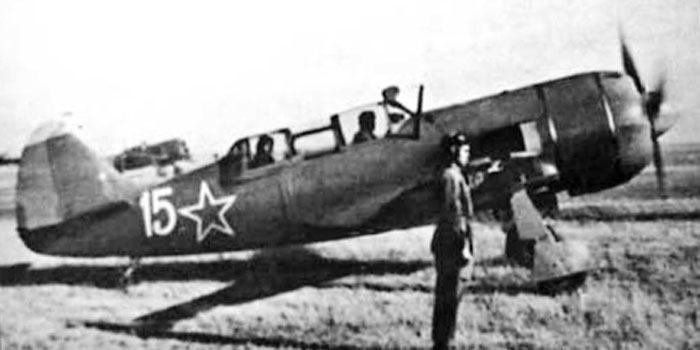
La-9UTI usually wore green/light blue livery.
La-9UTI with La-11 engine are often mistakenly defined as La-11UTI.
This plane should have a green/light blue livery too.
The green/light blue livery was characteristic on two-seater training versions of the La-9.
Usually they bore the red stars on 6 positions (above and below wings and fuselage sides, or above and below wings and tail sides).
La-11
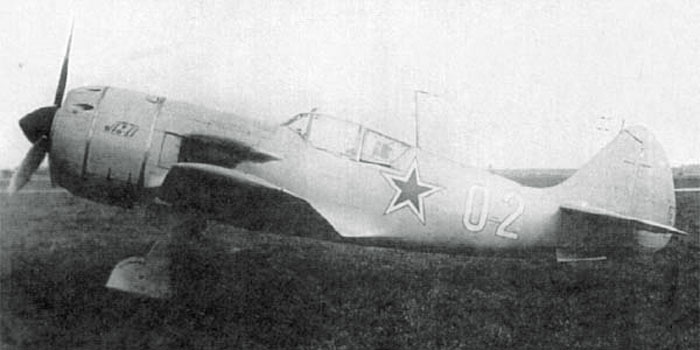
Just as La-9s, La-11s were usually solid light blue-grey, but photos of operative planes of late production with green-light blue livery exist as well.
Four La-11 of 911 IAP were painted cherry red overall with red stars on 6 positions (above and below wings and on fuselage sides) for Arctic operations.
La-15
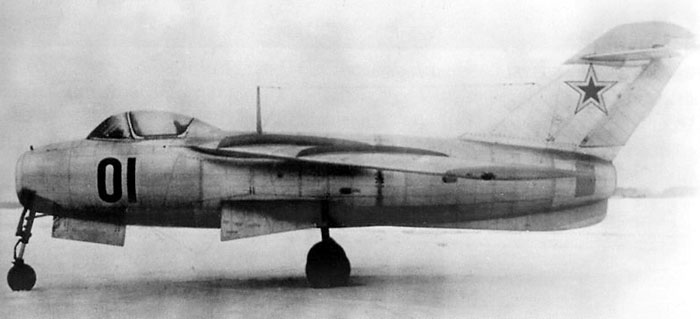
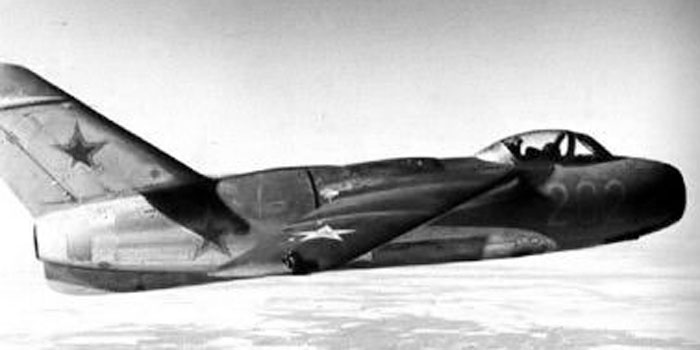
Similarly to MiG-15, La-15s wore a natural metal livery (as in this case) or were overpainted with aluminium paint.
The red stars are usually worn in 6 positions (wings and tail) but sometimes on the fuselage too.
Note a line, presumably red, delimiting the removable rear fuselage to give access to the engine.
Il-10
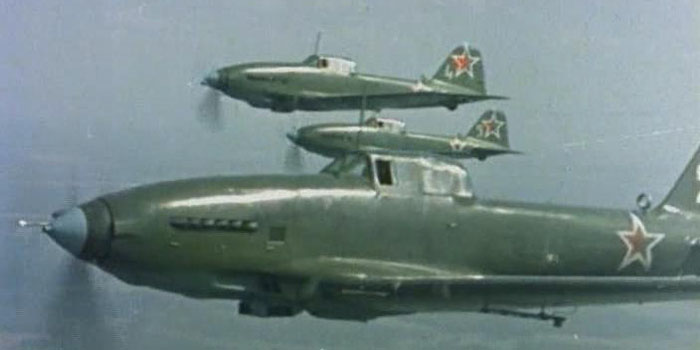
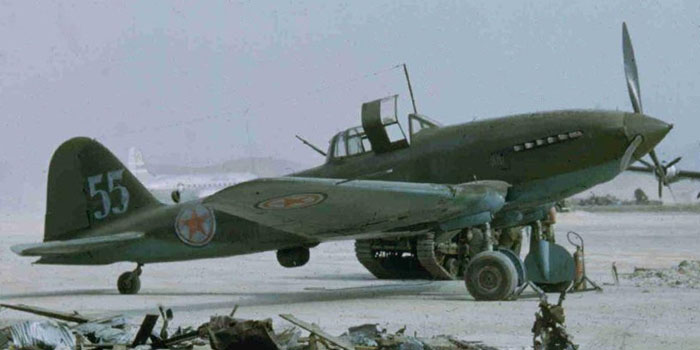
It is unclear if Il-10s started to be painted green/light blue just after the war's end, or if they wore an AMT-11/7 livery up to 1948.
By sure, Il-10s were painted gloss green and light blue in 1948 and after.
Right, above; a flight of Il-10s in the '50s.
An Il-10 captured by US troops in Korea. The plane has undoubtably a green/light blue livery.
Note that the enamels on metallic parts are slightly different from AGT-4 utilized on the fabric-skinner rudder.
The undersurface doesn't seem blue-grey, but bright blue AGT-7 or A-36g.
Tu-2
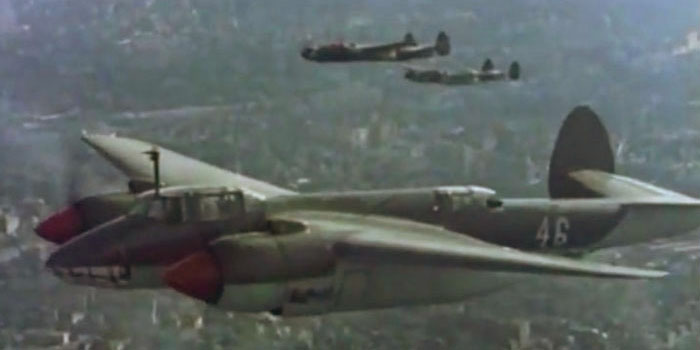
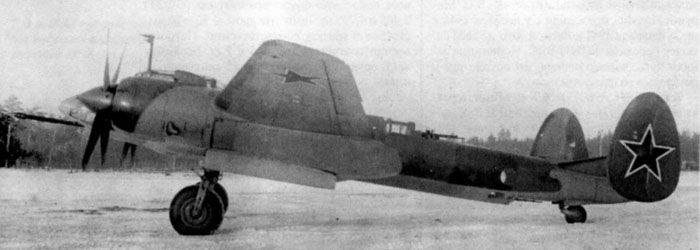
After having been stopped for the second time in 1945, the production of Tu-2 was restarted massively in 1946 up to 1949.
Strangely, at least a part of the newly built Tu-2s was painted with a variation of the same camouflage of 1943, but made with glossy colors: A-21g brown, A-24g green, A-32g, A-36g (and their nitro equivalents AGT-1, AGT-4, AGT-12, AGT-16 for the fabric skinned movable surfaces).
A part of the Tu-2 seems to have been painted, or repainted, in solid green; sometimes wartime-camouflaged Tu-2 preserved their camouflage on the stabilizers/rudders.
The color photo from a movie seems to depict a plane with solid green uppersurfaces, but the look of the surfaces looks disomogeneous.
The image shows the postwar gun-armed prototype with a three shades camouflage whose look is recurrent enough, but don't correspond at all to the factory sketch of 1944; it is easily recognizable for the well visible bands over the nose and the side of the left engine cowling; unfortunately we have not elements for a complete recostruction of the pattern.
Note that the prop blades are still black, without any yellow tips.
Tu-4
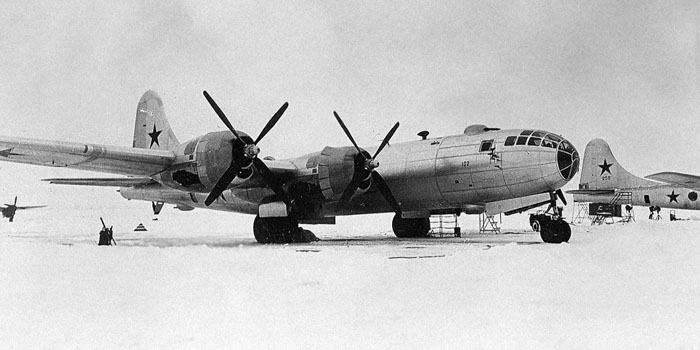
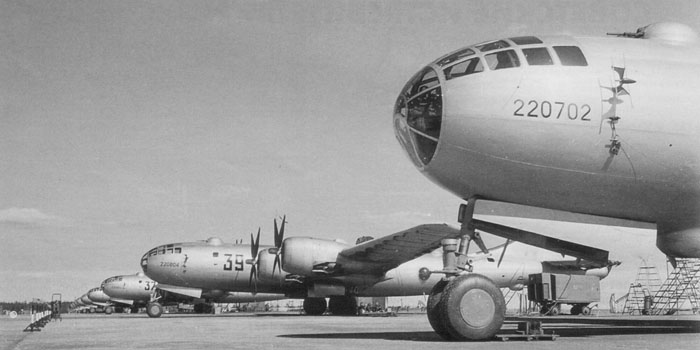
Tu-4 was an accurate copy of the B-29, the most noticeable difference being the tail gun.
The usual livery of Tu-4s was natural metal or aluminium, with red stars in eight positions.
http://igor113.livejournal.com/368363.html impressive walkaround with full internal details
http://scalemodels.ru/modules/forum/viewtopic_t_3504_start_0.html good topic in Russian full of useful links.
Tu-14
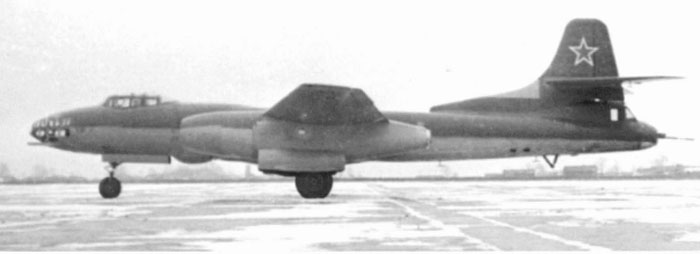
Tu-14 jet bomber entered service in 1950 with the Soviet Navy Air Force. It was built in 200 examples.
It often appears with the livery as in this photo, probably green A-24g over light blue A-28m or light blue-grey A-36m.

Surprisingly, some jet bomber Tu-14 shows a camouflage similar to that of postwar Tu-2s.
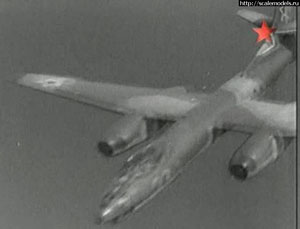 http://www.youtube.com/watch?v=J0fXLwoK0q4
http://www.youtube.com/watch?v=J0fXLwoK0q4
From propjet.ucoz.ru
La-15

La-15 entered service in 1949 and was built in 235 examples and served up to 1953, being the MiG-15 preferred to it.
According to US and Czech sources, some of these planes fought in Korean war.
They show the usual natural metal/silver livery introduced in 1949.
MiG-9
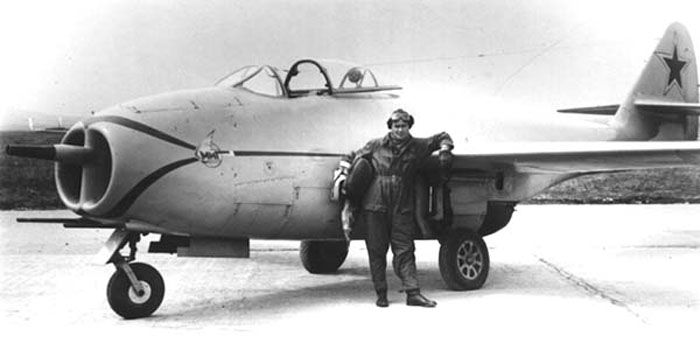
First MiG-9 were built in 1946, and were the first jet fighters operative with the Soviet Air Force.
Despite being the examples preserved in museums painted with silver, camouflaged or green/blue liveries, all the historical photos available in Squadron/Signal monograph shows them all in light blue-grey, including the MiG-9M prototype.
This image depicts the prototype I-300 in mid 1946. The shade of grey looks very light, it is probably Ae-9 as on prewar planes; later planes bore A-36g light blue-grey.
MiG-15
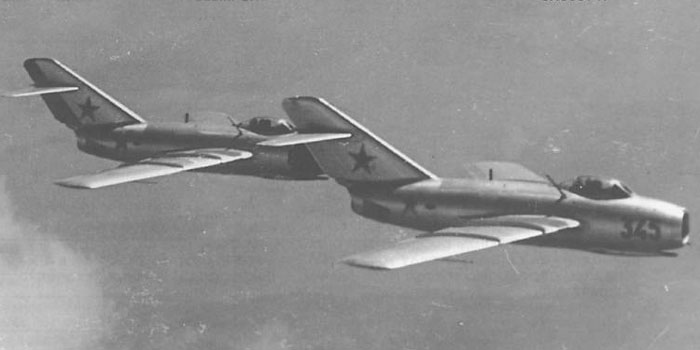
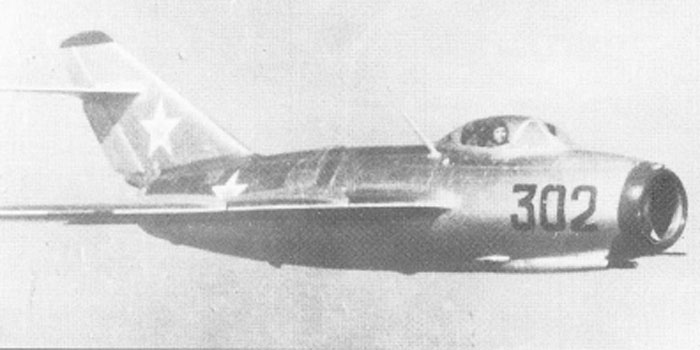
The MiG-15 entered service with the Soviet Air Force in 1949.
The external surfaces, unprimed, were painted with a silver color named 170, that demonstrated scarcely durable and peeled off, besides it required hot drying and so was difficult to be repaired at unit level.
In 1951, they changed it with the trasparent varnish 9-32, that was more resistant and didn't require hot curing. This varnish could be completely trasparent or slightly yellowish.
If addictioned with 6% aluminium powder, they obtained the 9-32Al aluminium paint.
This product was operationally tested in late 1950 with satisfactory results, and was adopted during the following year. So, Soviet metallic planes as the MiG-15 and Il-28 could have been both natural metal (varnished) or painted silver.
http://aerobaticteams.net/soviet-aerobatic-teams.html
image from Mikoyan-Gurevic MiG-3 of Yefim Gordon, ed. Aerofax
Il-28
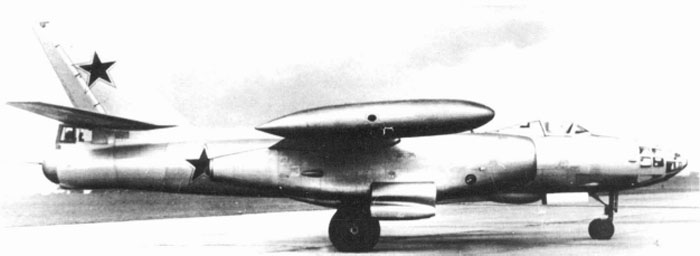
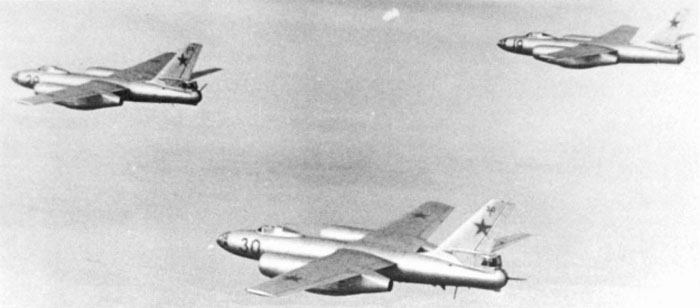

The il-28 entered service in early 1950; it was built in over 6300 examples and widely exported.
The usual livery of Il-28s in Soviet service was natural metal and/or silver. The red stars were carried in six or eight positions (not always on the fuselage).
http://www.youtube.com/watch?v=J0fXLwoK0q4
The Il-28s on the background are unmarked and bear a disruptive camouflage. They probably were for export.














